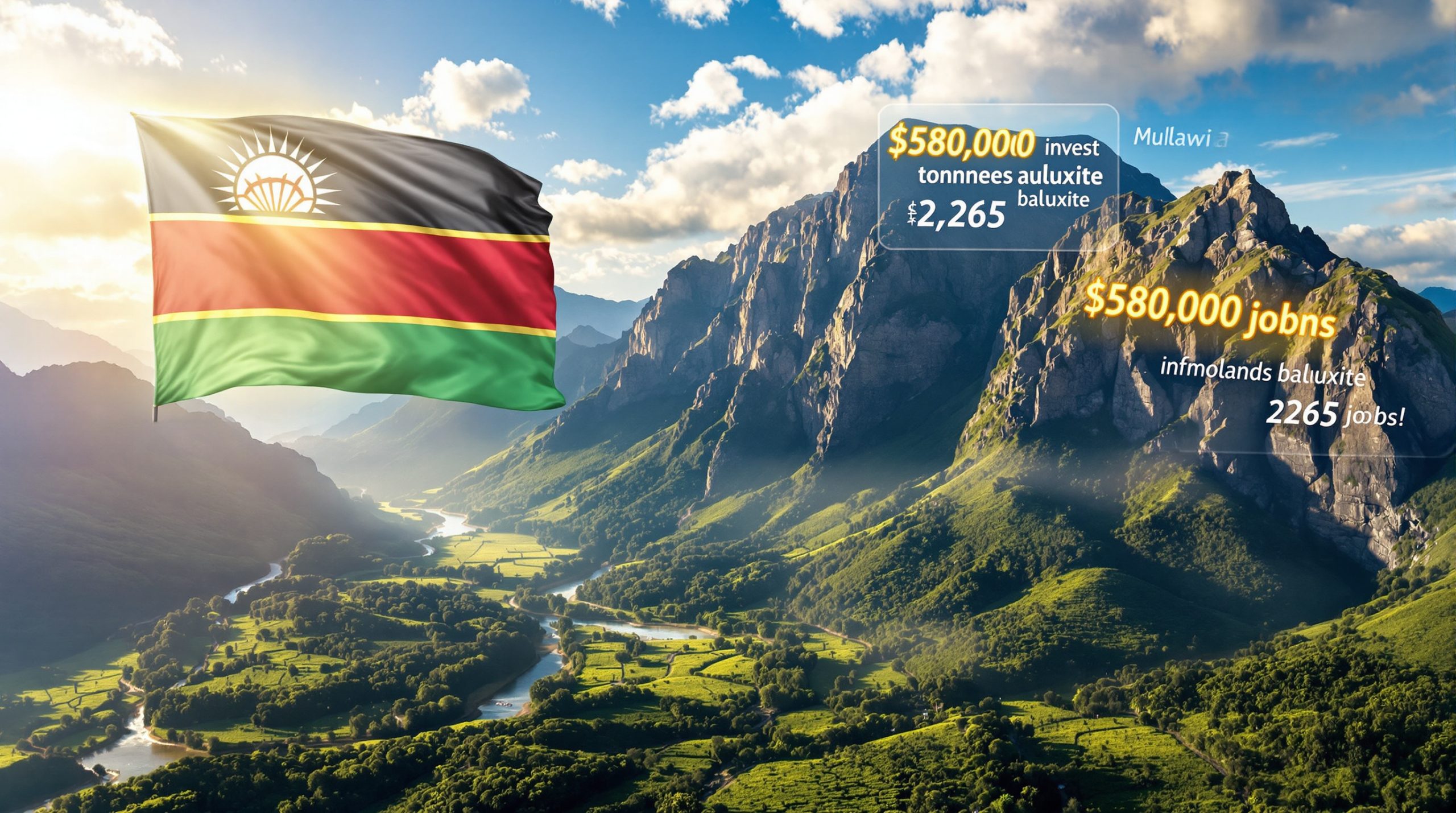BHP Renews Care for Hedland Partnership: Two Decades of Environmental Conservation
BHP's renewed two-year commitment to the Care for Hedland Partnership marks a significant milestone in corporate-community environmental collaboration, celebrating 20 years of concentrated conservation efforts in Western Australia's Pilbara region. Over the past decade, this partnership has safeguarded over 63,350 Flatback turtle eggs from predators, tagged 532 turtles for research, and engaged hundreds of volunteers in habitat preservation. Beyond turtle conservation, the initiative supports recycling programs, community gardens, and educational outreach, reflecting BHP's broader environmental, social, and governance (ESG) priorities amid mining ESG challenges.
With plans to expand circular economy projects like the Hedland Repair Café and Timber Pallet Recycling initiative, the partnership exemplifies how long-term corporate investment can transform local environmental stewardship into a structured, scalable model for conservation success in industrial regions.
What is the Care for Hedland Partnership?
The Care for Hedland Partnership is a long-standing collaboration between BHP and Care for Hedland, an independent environmental interest group focused on conservation efforts in the Pilbara region. The partnership supports various environmental and community initiatives, with a particular emphasis on the protection of Flatback turtles and their habitats in Port Hedland and surrounding areas.
This collaborative effort represents one of BHP's most enduring community investments, recently celebrating its 20-year anniversary with a renewed two-year commitment. The partnership demonstrates how mining corporations can contribute meaningfully to biodiversity conservation while supporting local community development.
History of the Partnership
Established 20 years ago, the Care for Hedland Partnership began as a modest initiative to protect the Pilbara's unique marine ecosystems. What started as primarily volunteer-driven conservation efforts has evolved into a structured program with professional staff, formal planning processes, and measurable conservation outcomes.
The partnership's renewal ensures continuation of crucial environmental monitoring programs, especially for endangered Flatback turtles, which face multiple threats including predation, habitat disruption, and climate change impacts. This long-term commitment provides stability for conservation planning that many shorter-term environmental initiatives lack.
Why is the Partnership Important for Environmental Conservation?
The Care for Hedland Partnership demonstrates the vital role in clean transition that corporate-community collaborations can play in addressing complex environmental challenges. By combining BHP's resources with local expertise, the partnership has achieved significant conservation outcomes that would be difficult for either party to accomplish independently.
The initiative provides a sustainable funding model for conservation in a region where environmental organizations often struggle to maintain continuous operations. This stability enables long-term monitoring and research programs that deliver more meaningful scientific data and conservation outcomes than sporadic efforts could achieve.
Flatback Turtle Conservation Achievements
The partnership's turtle conservation program has saved more than 63,350 turtle eggs from predators over the past decade, representing a significant contribution to the species' survival. Through systematic beach monitoring during nesting season, volunteers and staff have documented 16,933 nests, creating an invaluable database of Flatback turtle breeding patterns.
More than 532 turtles have been tagged for tracking and research, providing critical insights into migration patterns, feeding grounds, and breeding behaviors. This data helps scientists better understand the species' needs and informs protective measures across their range.
The involvement of hundreds of community volunteers in these conservation efforts has created a knowledgeable local population invested in protecting their natural heritage. This community engagement model has proven particularly effective in remote regions where government conservation resources are limited.
Environmental Impact Beyond Turtle Conservation
While turtle conservation remains the flagship initiative, the partnership supports comprehensive waste management initiatives throughout the Pilbara region. These programs address both residential and industrial waste streams, significantly reducing pollution that threatens marine environments.
The partnership actively promotes the Containers for Change recycling program, which incentivizes community participation in recycling efforts while reducing landfill waste. Several community gardens have been developed and maintained, creating green spaces in industrial areas while educating residents about sustainable food production.
Educational programs implemented in local schools reach thousands of students annually, creating the next generation of environmental stewards. These programs integrate traditional ecological knowledge with modern conservation science, honoring the region's Indigenous heritage.
How Has BHP's Support Transformed Care for Hedland?
BHP's long-term investment has enabled Care for Hedland to evolve from a primarily volunteer organization into a professional conservation entity with significant regional impact. This transformation illustrates how corporate support can strengthen grassroots environmental initiatives when delivered through respectful partnership models.
The organization now operates with strategic planning processes, professional management, and measurable key performance indicators. This evolution has increased the organization's effectiveness while maintaining its community-centered ethos and connection to local environmental priorities.
Organizational Development
With BHP's support, Care for Hedland has transitioned from a volunteer-dependent organization to a structured entity with professional management and consistent programming. This transformation has enhanced the organization's capacity to deliver conservation outcomes while maintaining community engagement.
The partnership has enabled the development of formal planning processes and key deliverables, improving accountability and impact measurement. Care for Hedland currently employs over 25 staff members at various times throughout the year, providing valuable employment opportunities in environmental management for local residents.
The organization engages with more than 260 volunteers annually, creating meaningful conservation experiences while building community capacity in environmental stewardship. Through its educational programs, Care for Hedland reaches thousands of visitors and residents, raising awareness about the Pilbara's unique ecosystems and conservation challenges.
Quote from Leadership
"We're incredibly proud to celebrate two decades of collaboration with Care for Hedland. There is nowhere else on earth like the Pilbara and its ongoing conservation is key to BHP and part of our commitment to healthy environments and sustainable communities," states Rachel Donkin, BHP manager for Western Australia community.
This sentiment reflects BHP's recognition that environmental stewardship represents both corporate responsibility and strategic investment in maintaining the company's social license to operate in environmentally sensitive regions.
What Future Initiatives Are Planned?
The renewed partnership agreement outlines ambitious plans to expand both conservation efforts and sustainability initiatives. These future projects reflect evolving environmental priorities while building on established conservation successes.
By diversifying its environmental programs, the partnership aims to address broader ecological challenges while maintaining its core focus on marine conservation. These new initiatives demonstrate how mature corporate-community partnerships can continuously innovate to meet emerging environmental needs.
Circular Economy Projects
The partnership plans to develop a Hedland Repair Café, where community members can bring broken items for repair rather than disposal. This initiative will reduce waste while building practical skills within the community.
A Timber Pallet Recycling initiative will transform discarded shipping materials into useful products, addressing a significant waste stream in this shipping-intensive region. The Food Waste Diversion program will collect organic waste for composting, reducing methane emissions from landfills while creating soil amendments for community gardens.
The establishment of a Tip Shop will allow for the recovery and resale of usable items from waste streams, creating a circular economy model while generating revenue for conservation programs. These circular economy initiatives demonstrate how environmental conservation can align with economic opportunity in regional communities.
Sustainability Focus
Future plans include expanding conservation efforts beyond turtle monitoring to encompass other threatened species in the Pilbara region. The partnership will implement additional waste reduction strategies targeting microplastics and other pollutants that threaten marine ecosystems.
Community engagement will increase through new programs designed to involve diverse demographic groups in conservation activities. These initiatives recognize that lasting environmental protection requires broad community support and participation from all sectors of society.
How Does This Partnership Reflect BHP's ESG Commitments?
The Care for Hedland Partnership exemplifies BHP's approach to environmental, social, and governance (ESG) responsibilities. By supporting locally-led conservation while addressing broader sustainability challenges, BHP demonstrates a nuanced understanding of corporate environmental stewardship.
This long-term investment in community-based conservation aligns with investor expectations for meaningful corporate sustainability initiatives. The partnership's measurable outcomes provide tangible evidence of BHP's environmental commitment beyond regulatory compliance.
Community Engagement
BHP's support for local environmental organizations strengthens social cohesion in communities where the company operates. The partnership promotes volunteer participation in conservation, creating meaningful connections between residents and their natural environment.
Through this collaboration, BHP builds stronger relationships with the Port Hedland community, enhancing trust between industry and residents. This community-centered approach represents best practice in corporate social responsibility, recognizing that environmental initiatives must engage local stakeholders to achieve lasting impact.
Environmental Stewardship
The partnership protects endangered marine species that represent irreplaceable biodiversity in Western Australia's coastal ecosystems. Conservation efforts preserve critical coastal habitats that provide ecosystem services benefiting both wildlife and human communities.
These initiatives support biodiversity in the unique Pilbara ecosystem, which hosts numerous endemic species found nowhere else on Earth. By investing in comprehensive environmental protection, BHP helps maintain ecological resilience in a region experiencing significant industrial development and clean energy revolution.
Sustainable Development
The partnership promotes circular economy initiatives that reduce waste while creating economic opportunities. Various recycling programs help conserve resources and reduce pollution in marine and terrestrial environments.
Educational programs prepare future generations for environmental conservation challenges, building human capacity for sustainable development. This focus on long-term sustainability demonstrates corporate responsibility that extends beyond quarterly profit considerations to intergenerational environmental stewardship.
FAQs About BHP's Environmental Partnerships
What is Care for Hedland best known for?
Care for Hedland is best known for its Flatback turtle monitoring program, which monitors Port Hedland beaches during nesting and hatching seasons to protect turtle populations. This flagship conservation initiative has become a model for community-based endangered species protection in industrial regions.
How many staff does Care for Hedland employ?
With BHP's support, Care for Hedland now employs over 25 staff members at any given time, a significant increase from its origins as a volunteer-dependent organization. This professional workforce enables year-round conservation programs while providing employment opportunities in environmental management.
What new initiatives are planned under the renewed partnership?
The renewed partnership will support new circular economy initiatives including a Hedland Repair Café, Timber Pallet Recycling initiative, Food Waste Diversion program, and a Tip Shop. These projects expand the partnership's focus beyond wildlife conservation to broader sustainability challenges facing the Pilbara region.
How long has BHP partnered with Care for Hedland?
BHP has partnered with Care for Hedland for 20 years, making it one of the company's longest-standing community partnerships in Western Australia. This two-decade commitment demonstrates the value of sustained corporate support for environmental initiatives, allowing for long-term planning and measurable conservation outcomes.
Environmental Partnerships as Corporate Strategy
The Care for Hedland Partnership demonstrates how environmental conservation can align with corporate strategy while delivering authentic community benefits. By investing in local environmental priorities, BHP strengthens stakeholder relationships while addressing sustainability expectations from investors, regulators, and consumers.
The partnership's longevity provides valuable lessons about successful corporate-community environmental collaboration. Key success factors include respecting local knowledge, maintaining operational independence of the environmental organization, and committing to transparent reporting of both achievements and challenges.
As expectations for corporate environmental responsibility continue to increase, the Care for Hedland Partnership offers a proven model for meaningful industry engagement in conservation. The initiative demonstrates that when properly structured, corporate environmental partnerships can deliver significant ecological benefits while decarbonise steel industry and address critical mineral shortages simultaneously with their community relations.
Want to Discover the Next Major Mining Opportunity?
Stay ahead of ASX mineral discoveries with real-time alerts from Discovery Alert's proprietary Discovery IQ model, transforming complex mining data into actionable investment insights. Visit our discoveries page to explore how major mineral discoveries have historically generated substantial returns for early investors.




